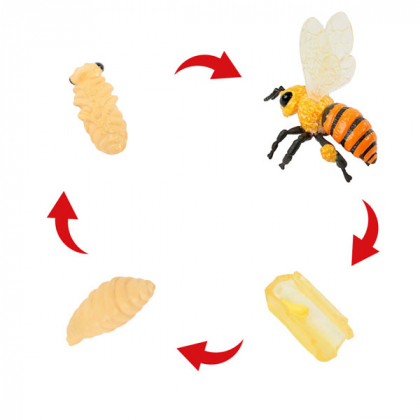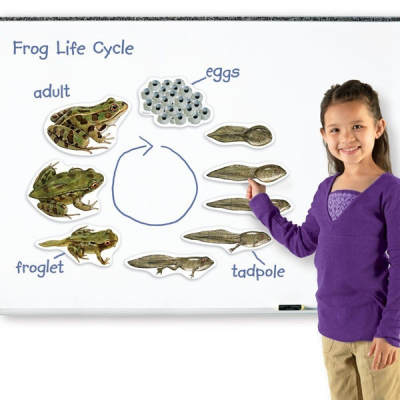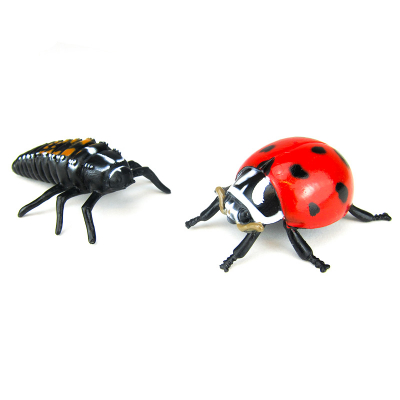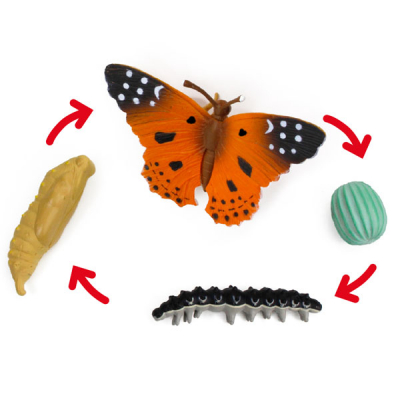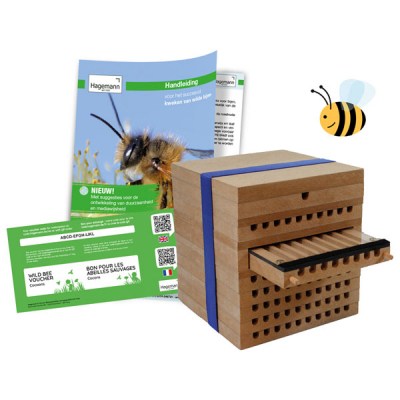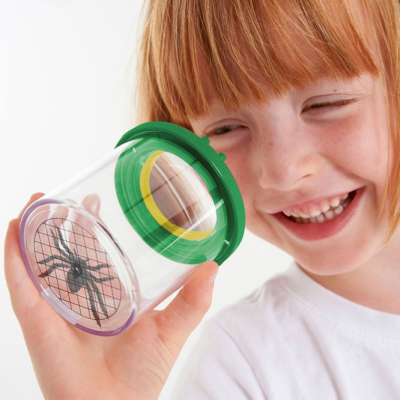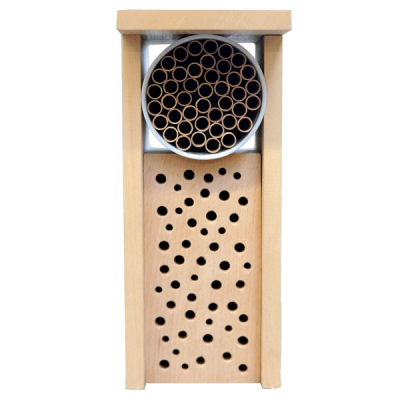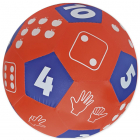Life cycle model "honey bee", 4 parts
These life cycle models give a precise overview of what the individual developmental stages look like. Unlike the real thing, they can also be handled and observed.
An amber ... Read more
These life cycle models give a precise overview of what the individual developmental stages look like. Unlike the real thing, they can also be handled and observed.
An amber fossil shows that ancient bees already existed 100 million years ago. Humans have been using honey bees for thousands of years. In Egypt, during the time of the Pharaohs, there was a highly developed beekeeping culture. In Ancient Greece, the medicinal significance of honey was recognised. In the early Middle Ages, severe punishments were imposed for the theft of honey or bees. The bee is also a component in lots of coats of arms (Napoleon, Pope Urban VIII).
Bees are important for our ecosystem. They are vital for the pollination of a huge variety of plants and trees. Biologists are becoming increasingly interested in bees and are researching the behaviour of this superorganism. Honey bees overwinter as a population, they can only exist in a group as they need social contact with their contemporaries. They subsist on the honey supplies they have laid down or are supplied with sugared water by the beekeeper.
Scope of delivery: you will receive the following 4 lifecycle models:
- Eggs in the honeycomb: the queen lays up to 1,500 eggs in individual honeycomb chambers. Fertilised eggs hatch into female worker bees, while unfertilised eggs produce male drones.
- Larvae: hatch out after 4 days. They are fed in the egg cell (pollen and propolis for workers and drones, royal jelly for queen bees). The larvae shed their skin several times and then spin a cocoon, the honeycomb cell is sealed with wax.
- Pupa: the pupa does not receive any food and begins the transformation. This stage takes 6 days for queen bees, 11 days for workers, and 14 days for drones.
- Bee: the bee hatches out of its egg chamber. The lifespan of a worker bee is approx. 8 weeks, for a drone this is approx. 4 - 5 weeks. The queen has a life expectancy of 7 years.
Dimensions, bee: 7 x 10 x 1 cm
Age specification:
Suitable from age 4.
| SKU | TIX-6989 |
|---|---|
| Brand | TimeTEX |

